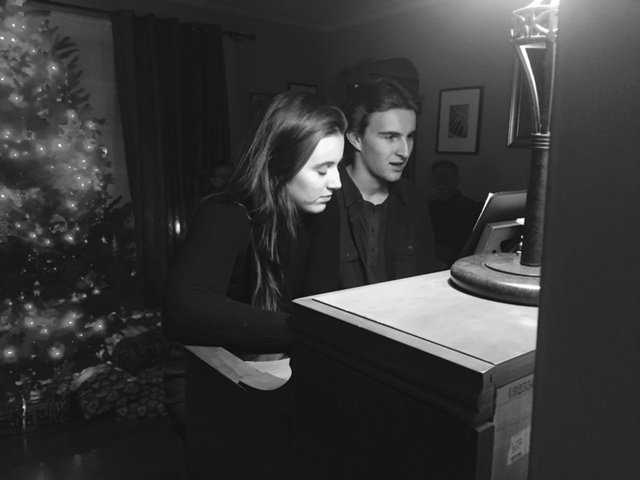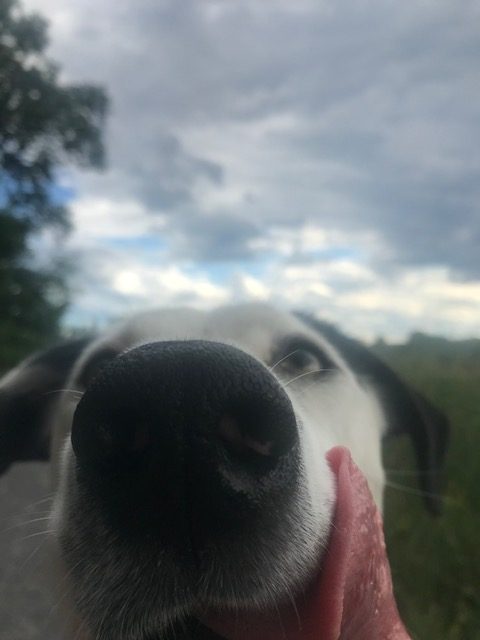–
In my new book Upstander, I gave myself the opportunity to learn more about Mary, a minor (but crucial) character in Bystander.
And by “learn more,” I guess that I mean: “make up more.”
It’s all just stuff I make up, right? Characters don’t really talk to me, and heaven knows the books don’t write themselves.
But in a way, once a character is introduced, and participates in some scenes, that character does seem to take on a life of her own. If A, B, and C are true . . . then it organically leads the writer to D and E.
Obviously the writer is making choices all the time. Mary doesn’t exist except in my imagination. Until you read the book, and then she exists (and transforms) in your imagination, too.
Anyway, I decided a lot of things about Mary that I didn’t need to address in Bystander. We enter her home; meet her family; see her interact with new characters; learn that she used to play softball and keeps a stash of marshmallows in her room; and so on.
She’s also creative, artistic.
Here are two moments that show that. The first is from page 93:
Mary set out her art supplies. Paper, brushes, watercolors. She painted a seated female figure, facing away, balancing a stack of rocks on her head. It was a strange, almost magical image and it pleased Mary to make it.
So here’s the deal. Once I decided that she should paint something, I had to figure out what that something would be. I looked at my college-age daughter Maggie’s artwork and selected an image:
–
–
If it was good enough for Maggie, it was good enough for Mary. Not that a reader would ever see it, or even think much about it. The iceberg effect, once again.
The other scene just shows the way Mary thinks. And I loved that image of her floating in the pool, goggles on, head in the water, starting on page 127. It was a way to get into her head, explore her liquid thoughts . . . and also, at the very end of this section, to restate another important theme of the book, the need for us all to be seen . . .
It was such a calming shade of blue-green. Soothing, peaceful. Mary drifted on an inflatable pool mattress, her head hanging facedown in the water, wearing goggles and a snorkel. She gazed deeply at the bottom of Chrissie’s pool and thought of all the names she remembered from acrylic paint tubes and other places: turquoise, olive, emerald, cadmium, mint, lime, sea foam, lagoon, teal. She settled on aquamarine, which was basically green with a bluish tint. It was the color of the pool that she was absorbing into her bloodstream through her eyes. A serenity seeping into her body. Mary had earrings that were aquamarine gemstones, a color she avoided during the gray winter months. But for August afternoons in the blistering sun? Perfection.
Chrissie and Alexis were lounging side by side, content to find themselves returned home after thirteen epic days on the Jersey Shore. Upon seeing their friend Mary again, they squeezed her tight and said all the best, gushy things—but Mary sensed the connection between the two girls was stronger than ever. They were rock-solid besties, and nothing would come between that. Their bond felt like a wall through which Mary could never pass. To her surprise, it upset Mary to feel like an outcast. It wasn’t logical, but a feeling was a feeling, not subject to notions of “right” or “wrong.” Some unspoken part of her simply wanted to belong. She’d felt sad lately and wasn’t sure why. Maybe it was just everything. So she floated on the water, letting her thoughts drift to that cruel idiot Griffin Connelly, and Chantel, and, always, Jonny.
Everyone said it was better that he was living on his own. Yet Mary’s imagination kept her mind racing at night—a nervous, stressed feeling she couldn’t push aside. She woke up in the morning and felt tired. Everywhere she turned, Mary felt disconnected, as if she were fading into the background, as if she were absorbing the colors and designs of the carpets and wallpaper. Could she become a ghost, too? How come no one saw her, really saw her, anymore?
–
–
Junior Library Guild Selection.
Thanks for stopping by!
–
–



































